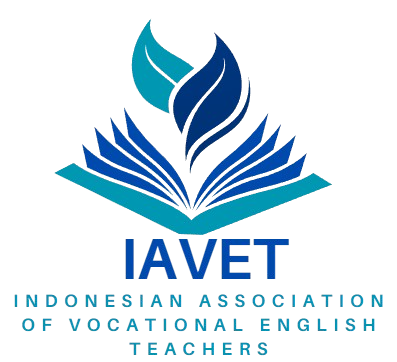The Influence of Peer Tutoring Method to the English Learning Outcomes
DOI:
https://doi.org/10.31963/rial-ej.v1i2.4172Keywords:
Peer Tutoring Method, Learning OutcomesAbstract
Peer tutoring has become an increasingly popular as a method in recent years. This study aimed to determine the influence of the peer tutoring method on the student learning outcomes in English class VII grade students of SMP Negeri 5 Mandai. This type of research is experimental research. The data collection technique was done by using test and documentation techniques. Data collection tool in the form of multiple-choice questions that have previously been tested is analyzed with validity and reliability data analysis techniques in the form of quantitative. The results showed that the average value of control class post-test was 6.422 while the average value of experimental class 14.831. Based on the results of calculating of the hypothesis test shows the value of sig (2-tailed) 0.05, (0.116 < 0.05), H0 is rejected ÂReferences
Astri, Z. (2018). The Use of Total Physical Response Method for Different Learning Styles in English Vocabulary. 1(1), 25–38. https://ejournals.umma.ac.id/index.php/seltics
Astri, Z., Noer, F., & Wahab, I. (2022). The Use of WhatsApp in Learning English During Pandemic Covid-19: Students’ Perception. Journal of Teaching and Education for Scholars (JOTES), 1(1), 47–53. https://www.ojs.ycit.or.id/index.php/JOTES/article/view/28/21
Astri, Z., Nur, S., & Misnawati, M. (2022). Need Analysis of Pharmacy Students in Toefl Preparation Class. VELES Voices of English Language Education Society, 6(1), 1–13. https://doi.org/10.29408/veles.v6i1.4917
Biggs, J., & Tang, C. (2007). Teaching for quality learning at university . Open University Press.
Bloom, B. S. , Engelhart, M. D., Furst, E. J. , Hill, W. H., & Krathwohl, D. R. (1956). Taxonomy of educational objectives: The classification of educational goals. In Handbook I: Cognitive domain. David McKay Company.
Cavanagh, R. F., Coffman, C. R., & Lane, J. D. (2016). Peer tutoring in mathematics: A meta-analysis. Journal of Educational Psychology, , 108(2), 249–263.
Creswell, J. W. (2009). Research design: qualitative, quantitative, and mixed methods approaches (3rd ed.). SAGE. https://www.worldcat.org/title/research-design-qualitative-quantitative-and-mixed-methods-approaches/oclc/269313109
Creswell, J. W. (2014). Research design: qualitative, quantitative, and mixed methods approaches (4th ed.). SAGE.
Elliott, E. S., & Busse, R. T. (2001). Implementing peer tutoring in the classroom: A review of the literature. Teaching Exceptional Children, 34(4), 56–60.
European-Commission. (2018). The European Qualifications Framework: Supporting learning, work, and cross-border mobility (pp. 69–86). European Union. https://doi.org/10.7135/upo9780857286581.008
Huang, H. L., & Hong, Z. R. (2016). The effects of peer tutoring on mathematics performance and attitudes. Journal of Educational Research, 109(3), 231–239.
Lin, H. L., & Wu, W. C. V. (2014). Efficacy of peer tutoring in reading for students with disabilities: A systematic review and meta-analysis. Research in Developmental Disabilities, 35(10), 2445–2454.
Noer, F., Astri, Z., & Hairuddin, N. H. (2021). English Language Variation of Tourist Guide: A Case Study of Indonesian Context. 4(2), 133–144. https://ejournals.umma.ac.id/index.php/seltics
Nur, S., Anas, I., & Rahayu. (2022). Engaging Novice Writers in Online Collaborative Review through Peer- Review Circles. 6(1), 63–74.
Quan, G., Li, Y., & Li, D. (2019). The impact of peer tutoring on the writing performance and motivation of English as a foreign language learners. Frontiers in Psychology.
Rosanti, D. (2018). Penerapan Metode Pembelajaran Tutor Sebaya untuk Meningkatkan Aktivitas dan Hasil Belajar Siswa di SMA Negeri 9 Pontianak. Jurnal Pendidikan Matematika Dan IPA, 9(2), 1–11.
Sanjaya, W. (2014). Penelitian pendidikan: Jenis metode dan prosedur. Kencana.
Sugiyono. (2010). Metode Penelitian Pendidikan. Alfabeta.
Syamsir, N. F., Astri, Z., Suhartina, S., & Noer, F. (2021). Improving reading comprehension skill through Listen-Read-Discuss (LRD) learning strategy. Journal of Science and Education (JSE), 1(2), 60–71. https://doi.org/10.56003/jse.v1i2.28
Topping, K. J. (2005). Trends in Peer Learning. Educational Psychology, 25(6), 631–645. https://doi.org/10.1080/01443410500345172
Wahab, I., & Astri, Z. (2022). Students’ Interest in Using Semantic Mapping Technique in Learning English Writing Ability. Journal of Indonesian Scholars for Social Research Copyright, 2(1), 68–71.
Wahab, I., Astri, Z., Tanasy, N., & Fachrunnisa, N. (2021). A Conversation Analysis: The Use of Small-Talk. 4(1), 53–62. https://ejournals.umma.ac.id/index.php/seltics
Downloads
Published
Issue
Section
License
Copyright (c) 2023 Research and Innovation in Applied Linguistics-Electronic Journal

This work is licensed under a Creative Commons Attribution-ShareAlike 4.0 International License.
Authors who publish with this journal agree to the following terms:
Authors who submit article to this journal, agree to grant the copyright to Research and Innovation in Applied Linguistics (RIAL) under a Creative Commons Attribution License: Creative Commons Attribution-ShareAlike 4.0 International License.
![]()
For collaborative works, authors should ensure that they have secured the necessary permissions from co-authors to submit the manuscript and grant the rights outlined in this policy.
Archiving and Access:
RIAL upholds an open access policy, ensuring that articles are freely accessible to a global audience upon publication. Authors' work will be archived electronically, facilitating its long-term availability and visibility.







.png)
